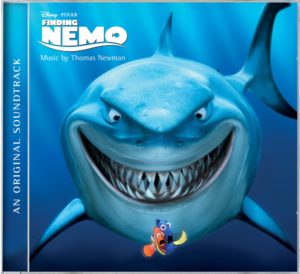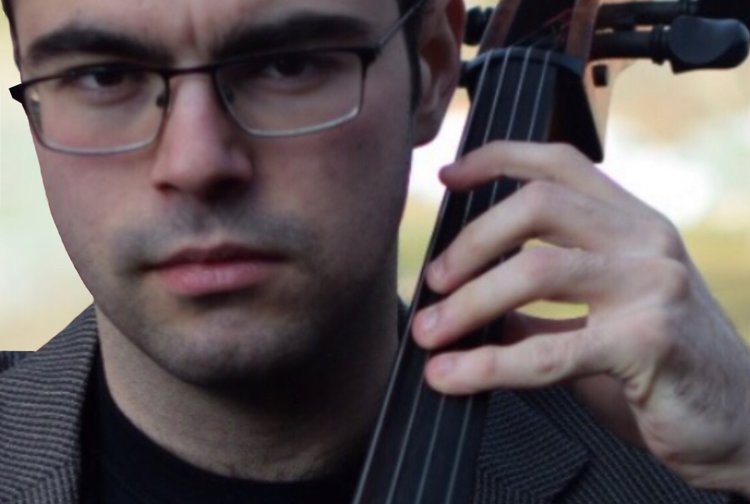
To this day, Pixar Animation Studios remains one of the most well-respected animation studios on the planet. Famous for releasing the first-ever computer-generated animated film, Toy Story (1995), the company, with each new film, has consistently released beautifully rendered and innovative films. They are also greatly accustomed to accolades as eight of their twenty-one films have earned the Academy Award in the Best Animated Film category. Although the majority of their more recent films have been sequels like Toy Story 4 (2019), Incredibles 2 (2018), Cars 3 (2017), and Finding Dory (2016), the quality of their original work is unparalleled, including films such as The Incredibles (2004), Ratatouille (2007), WALL-E (2008), Up (2009), and of course, Finding Nemo (2003).
Finding Nemo, the studio’s fifth film, was written and directed by Andrew Stanton. Originally conceived based off childhood experiences such as seeing a fish tank in a dentist’s office, Stanton’s realization of the characters Marlin and Nemo came after seeing a photograph of two clownfish peeking out of an anemone. In an interview with National Geographic magazine, Stanton said of the image, “It was so arresting. I had no idea what kind of fish they were, but I couldn’t take my eyes off them. And as an entertainer, the fact that they were called clownfish—it was perfect.” (source)
As the tag line, “There are 3.7 trillion fish in the ocean. They’re looking for one.” reads, Finding Nemo tells the story of an overprotective clownfish named Marlin who goes on an adventure to save his son, Nemo, who has been abducted by divers. Early in his journey, he meets a fish named Dory, a blue tang, suffering from an acute case of short-term memory loss. While the unlikely duo are traversing the ocean, facing various dangerous sea creatures, Nemo, who has an underdeveloped right fin, finds himself in a dentist’s fish tank in Sydney, Australia. Befriending the fish in the tank, they conceive of a plot to free themselves and return to their lives in the ocean. As Dory’s famous line, “Just keep swimming”, suggests, the film is seen by many as a potent allegory for carrying your strength and resolve through great hardship, never giving up. It also deals with issues of trust in the father/son storyline. Marlin, over the course of his journey, learns to trust in his son, despite his disability, and lets him live life. Given the film’s huge adventurous plot, but harboring such intimate themes, it was clear that a composer of a particular emotional resonance was needed for the project.
From the vantage point of 2020, it’s hard to imagine how Thomas Newman, with his quirky gestures and uniquely stylistic orchestrations, hadn’t composed for an animated feature before Finding Nemo — it being his first. However, in 2003, hiring a composer mostly known for his moody scores to dramas and thrillers like American Beauty (1999), and Road to Perdition (2002), might have proved a gamble. But, the idea of hiring Newman was on the table right from the get-go. When the time came to hire a composer for Finding Nemo, Stanton said, “I couldn’t imagine anybody else. His [Newman] music helped me set the tone on the script. I felt like I was getting an essential cast member.” (source) As it turned out, Finding Nemo proved to be a stylistic stepping stone for Newman and features many of the aural elements to be heard in his next score for Lemony Snicket’s A Series of Unfortunate Events (2004). Newman has made a living populating his scores with weird and quirky instrumental flavors, favoring wispy wind solos, a dazzling array of sampled percussion instruments, and string arrangements that just melt with his gorgeous, ambiguous harmonies. His palette seems completely at home within the undersea world, as every current Newman trademark came together to form the score for Finding Nemo.
The score begins with the cue titled “Wow”; Newman delivers us into the underwater world. The harmonic palette and the wide array of textures used in the score are introduced — from sampled electronic pads, sinewy piano gestures, quirky wind solos, sampled percussion grooves, and Newman’s lush string sound. What’s remarkable is how well he mixes the acoustic strings with the sampled pads, creating the core foundation for the score’s sound. In fact, it’s hard to discern the line between what is live and what consists of samples, which makes the score’s sound as ambiguous as the ocean itself. Sometimes, as in the next cue, “Barracuda”, for the more intense action scenes, Newman opts to use completely sampled brass instruments. Although distinctly different from the real thing, it does add lethal menace to such cues and I think it serves the story in the correct way. Most of the action music is actually surprisingly dissonant, considering this is technically a kids movie. It goes to show how Pixar’s films work on so many levels and how they are not afraid to truly be scary and thrilling.
Of the score, Newman has said, “I think Andrew [Stanton] is really interested in primitive feeling as it relates to children, and a lot of that was explored in Nemo… So it’s ironic that a movie about a fish [has] such a huge, wide range of emotive possibilities from the hysterical to the deeply profound.” (source) This sense of childlike emotion coalesced in the score’s single theme — Nemo’s Theme. The theme is introduced in the cue “Nemo Egg (Main Title)”, carried first by piano accompanied with wisps of electronic pads. Soon, strings join as the piano part becomes more elaborate, and finally the strings take over. The beautiful theme returns sparingly throughout the film and only at pivotal moments (see cues “Stay Awake”, “The Little Clownfish from the Reef”, “Finding Nemo”, and “Fronds Like These”) in Marlin’s quest, as he gets closer to saving his son. Despite minimal melodic material, Newman binds the score with his characteristic orchestration, string gestures and harmonies.
In accordance with the sampled sound for the more intense action cues, Newman frequently employs sampled pads and percussion for the numerous groove cues he writes. The cue “First Day” is a perfect example of this and also a great example of Newman’s utterly unique sense of orchestration. Solo harp opens the cue with the main material over a bed of electronics. After the introduction, the music gets more busy when the strings come in. It’s hard to tell whether they are synthesized or real, but either way, this is the quintessential sound that Newman uses to keep the score unified throughout the course of the story. The very next cue titled “Field Trip” is, in my opinion, the most gorgeous piece of music composed for the score.
The Newman family and Pixar have a long history together. Before Thomas took the reins for Finding Nemo, his cousin, Randy Newman had scored the first four Pixar films and has returned intermittently for the Cars and Toy Story franchises, respectively. Thomas Newman returned to score the monumentally successful and heartfelt film WALL-E and then for the sequel to Finding Nemo: Finding Dory. It’s unclear whether one or both of the Newmans will score another Pixar film, but I have hope. Thomas Newman’s three Pixar scores stand out as being entities that are just as thrilling, rich, and beautiful as the movies they inhabit. That’s a testament to a great score, and a testament to the exceptional work Newman put into his first one, the Finding Nemo score.
Listen or buy
- Buy this soundtrack digitally from Amazon.com or Apple Music
- Listen to this soundtrack on Spotify
- Request a track of this soundtrack on StreamingSoundtracks.com
Tracklist
The highlights are in bold.
- Wow (2:31)
- Barracuda (1:29)
- Nemo Egg (Main Title) (1:16)
- First Day (1:15)
- Field Trip (0:57)
- Mr Ray, Scientist (1:28)
- The Divers (1:56)
- Lost (1:03)
- Short-Term Dory (0:43)
- Why Trust a Shark? (1:17)
- Friends Not Food (1:51)
- Fish-O-Rama (0:29)
- Gill (1:40)
- Mt. Wannahockaloogie (1:20)
- Foolproof (0:32)
- Squishy (1:32)
- Jellyfish Forest (1:32)
- Stay Awake (1:47)
- School of Fish (1:03)
- Filter Attempt (2:05)
- The Turtle Lope (2:04)
- Curl Away my Son (1:28)
- News Travels (1:13)
- The Little Clownfish from the Reef (1:15)
- Darla Filth Offramp (2:22)
- Lost in Fog (1:05)
- Scum Angel (1:22)
- Haiku (1:41)
- Time to Let Go (2:22)
- Sydney Harbour (0:28)
- Pelicans (1:12)
- Drill (0:50)
- Fish in My Hair! (1:29)
- All Drains Lead to the Ocean (1:36)
- …P. Sherman, 42 Wallaby Way, Sydney… (0:39)
- Fishing Grounds (1:41)
- Swim Down (1:46)
- Finding Nemo (1:19)
- Fronds Like These (1:57)
- Beyond the Sea (performed by Robbie Williams) (4:26)
Total length: 60 minutes
Walt Disney Records (2003)





